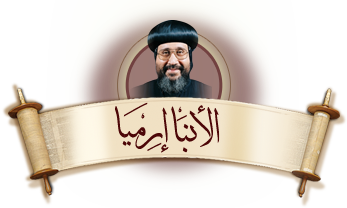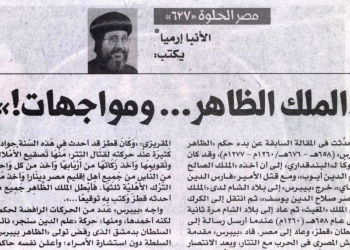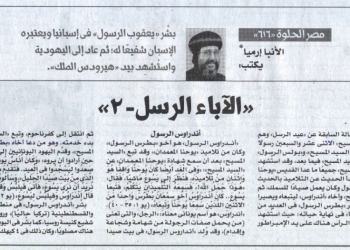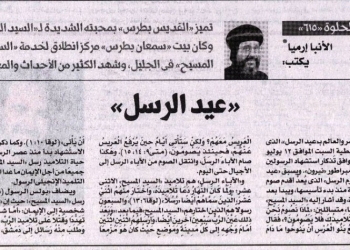In the previous article, we talked about Gaish Ibn Khumarawayh, the ruler of Egypt who ruled only for few months, his ousting and death. Then we began talking about Caliph Al Mu’tadid, the son of Al Muwaffaq, against whom many rebellions were raged and unrest prevailed during his ruling period which also witnessed the rising of the Samanid State in Khorasan.
The Samanid State in Khorasan
The Samanid State goes back to Ismail al-Samanid, whose origins descend from one of the Persian families that ruled the Transoxiana since the age of Caliph Al-Ma’mun. These families also managed to overthrow both the Saffari and Zaydi States, which was greatly desired by Caliph Al Mu’tadid. The Samanid State ruled Khorasan until 389 AH (999 AD).
Al Mu’tadid moved the capital from Samarra to Baghdad once again. His rule lasted for about ten years until his death in 289 AH (902 AD), then Caliphate accrued to his son Al Muktafi Billah.
As for the conditions of the Church at that time, Pope Shenouda I departed in 880 AD (277 AH) and was succeeded for Saint Mark See by Pope Mikhail I, the 56th Patriarch of Saint Mark See.
Pope Mikhail I (266 – 294 AH) (880 – 907 AD)
He is the 56th Patriarch of Saint Mark See; after the departure of Pope Shenouda I, the congregation and the bishops had come to agree to choose a monk from the Monastery of St. Macarius called Kha’il, who was known for his tolerance, tranquility, and extensive knowledge of ecclesiastical sciences, and so he became the Patriarch of the See of Saint Mark under the name of Anba Mikhail I. His ordination was during the reign of Ahmed Ibn Tulun, who was busy then with the war. After being ordained, Pope Mikhail I was concerned with reconstructing churches.
Troubles and Hardships
Pope Mikhail suffered from many hardships, but he bore them all with great patience and steadfastness; one is that the Bishop of Sakha, who had been suspended by the Church Synod consisted of the Patriarch and the Bishops for his misconduct, plotted against the Pope, falsely informing Ahmed Ibn Tulun that the Pope possessed large sums of money. Thus, Ibn Tulun summoned the Pope in order to give him the money!
The father Patriarch replied that he had no gold, no silver, no treasures of any kind, which deeply angered the ruler so he ordered the Pope to be imprisoned. Inside the prison, a deacon called “Ibn Al Mudabber” – and some reported his name to be Ibn Al Munzer – was jailed with Pope Mikhail, he kept to serve the Pope, joining him in fasting as well as breakfasting of bread, salt and boiled legumes.
Pope Mikhail remained in prison for almost a year until Youhanna and Mousa, two clerks of Ahmed Ibn Tulun, attempted to plead with the ruler to allow them to take the Pope to their home. Although the ruler kept great respect for both clerks, yet he refused their request, so they resorted to the clerks of the minister; Youhanna and his son Makarah regarding the Pope’s release. The minister pleaded with Ibn Tulun who indeed released the father Patriarch, who then stayed at the minister’s house until it was decided for him to pay the amount of 20 thousand dinars in two installments: the first would be paid after a month, and the second four months later. Youhanna and Makarah wrote a bill including the money amount and they received Pope Mikhail.
Pope Mikhail stayed at the Church of Saint Virgin Mary at the Wax Palace. Near the end of the month, the money had not been yet collected; so Youhanna and Makarah paid 2,000 dinars, and the minister donated a thousand dinars, whereas for the rest of the money, it was borrowed from the merchants and the first installment was paid. Pope Mikhail began to collect money to pay his debt of the second installment required. Historian Sawiris ibn al-Muqaffa said that this extreme hardship had forced Pope Mikhail to ordain bishops for money they paid! He also sold some of the Church’s possessions like lands, houses and others, even the inscriptions and decorations of the churches were sold! Despite all this, the money collected was not enough to repay the due bill value! And … Stories about beautiful Egypt never end!
The General Bishop
Head of Coptic Orthodox Cultural Center


 العربية
العربية











